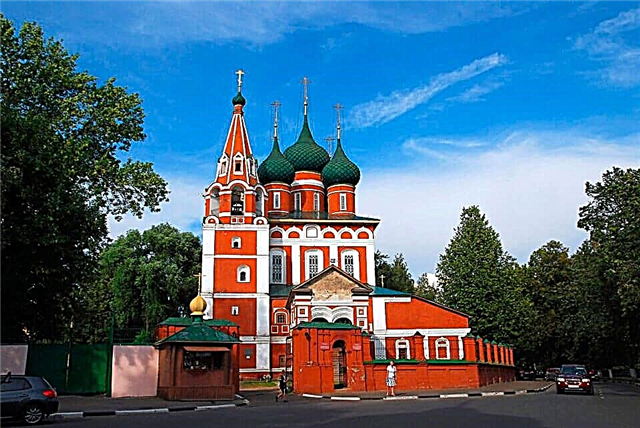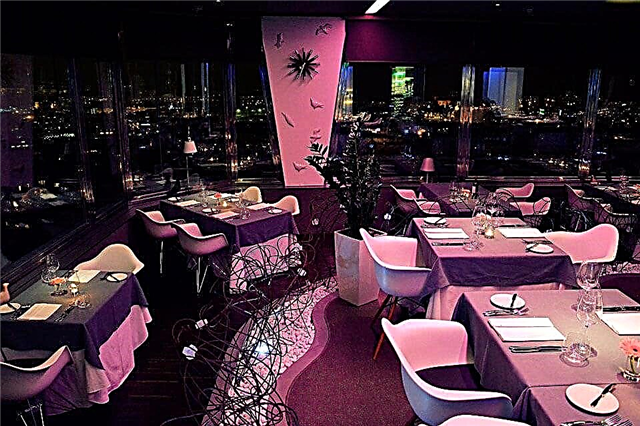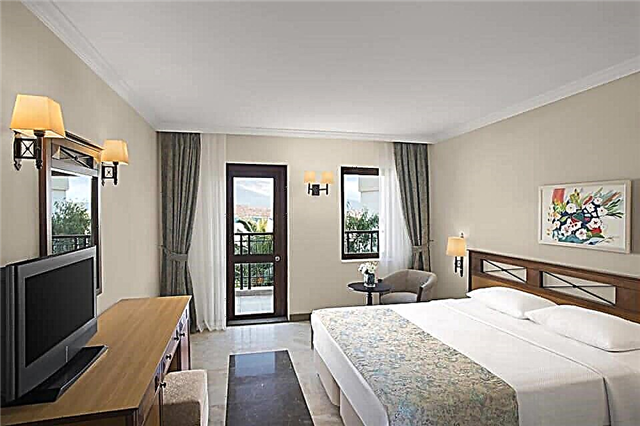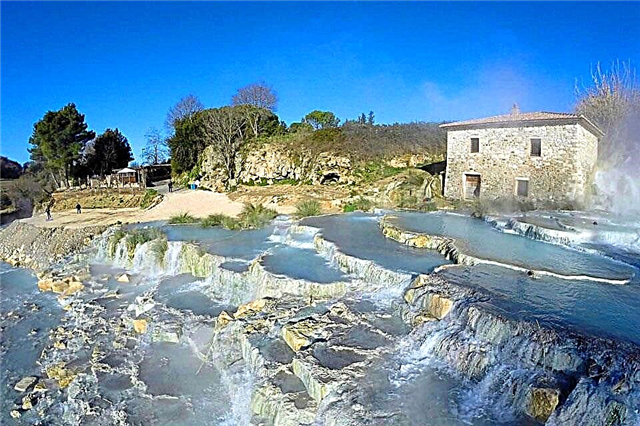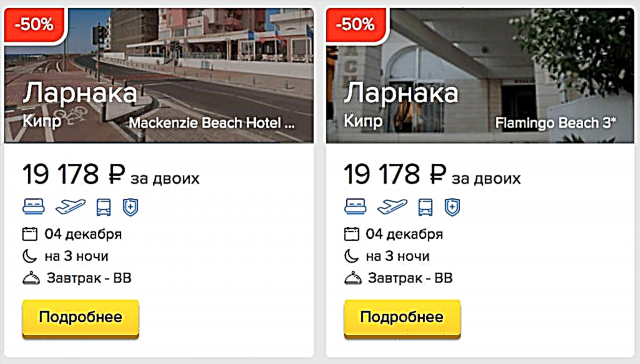Perhaps there is not a single European or world tourist top in which Venice does not occupy one of the first places. Travelers are attracted here by the rich history, full of complex and incomprehensible intricacies, and the romantic atmosphere, and numerous architectural masterpieces, and, of course, endless canals with legendary gondolas seen here and there in the distance.
A.P. was in love with the fabulous city on the water. Chekhov, who generally had a rather cool attitude to Europe, here many years later bought himself a small house, Johnny Depp, at different times Antonio Vivaldi, Titian, Marco Polo were born.
The list of famous names can be continued for quite a long time, as well as the sights located on the numerous islands. What to see in Venice in 1 day on your own is a rather difficult question, because those who come here as a traveler really “run up their eyes” from the abundance of everything interesting and unusual.
But we will try to offer the best route around the city. It is better to start an independent walk in the early morning, when tourists are still having breakfast in hotels, and the breathtaking aroma of coffee brewed according to a Venetian recipe can already be heard from cozy cafes.
Grand canal

The Grand Canal is the central Venetian street, along which the most beautiful buildings and palaces are located. True, it is not very similar to the street in the traditional sense of the word - along its entire length there are no embankments, and the houses have two exits - to land and to water. That is why it is possible to “walk” along such avenue only by gondola or vaporetto. The second option is cheaper at times and is ideal for those who want to save money.
Traditionally, it is the Grand Canal that is considered the central, front gate. Many years ago, merchant ships entered the city through it, today they gave way to small ships with tourists who dream of seeing Venice in all its glory and immediately, at first sight, discover all its best sides. However, you should not think that the Grand Canal is only of interest to guests.
For the convenience of local residents' movement, 4 bridges have been thrown across it, bearing the names of Rialto, Scalzi, Academy and Constitution. Also, you can often find medical, police and other "service" boats in its water area. So, if there is a choice - to see one thing, then it must certainly be the Grand Canal with its luxurious mansions, constant bustle and unique flavor, which is impossible to tell in words - everyone should feel it for himself.
Piazza San Marco

If the Grand Canal is the soul, then St. Mark's Square, located on one of its banks, can rightfully be called the heart of the city. A magnificent panorama opens to guests immediately from the pier and ... invariably takes your breath away. On a small patch, there are so many attractions and architectural masterpieces that would be enough for a mid-range European town. There is also the bell tower of San Marco, which is visible from any currents of the city and is a kind of landmark for those who have gone astray, and the Doge's Palace, and St. Mark's Cathedral, and a huge library, and much more.
But still, the visiting card of San Marco is not architectural masterpieces, but numerous pigeons who are glad to every guest and are sure that they come only in peace. Piazza San Marco has managed to become not just a kind of center (although if you look geographically - this is not so), but also a visiting card. She appeared in many films, overgrown with a huge number of legends and, of course, managed to become a cult place among tourists.
Doge's palace

The history of the Doge's Palace began in the distant 7th century. It was then that the decision was made to unite 12 groups of the Venetian islands into a single state, which was later named the Most Serene Republic of Venice under the leadership of a kind of Senate, consisting of 12 Doges. Not surprisingly, the government soon needed a place to hold official receptions and internal meetings.
This is how a luxurious palace appeared on Piazza San Marco. True, in the 15th century, the building was destroyed by fire and a new one was erected in its place, according to a completely different project, which has survived to this day. It should be noted that it looks really impressive - the architects, who sought to show the greatness and power of the city, achieved their goal.
Years passed, the political, economic situation in the world changed, and with it the status. The Doge's Palace became a haven for various state bodies - the Senate, Ministries, the Supreme Court and even the secret police. Today it is completely surrendered to the rule of tourists. It is immediately worth noting that to look at the Doge's Palace from the outside means nothing about it.
After all, inside you can see not just luxurious halls - each of them can rightfully be considered a work of art. For example, the hall of cards is decorated with the works of the best Italian masters (it is not difficult to guess what is depicted on the walls), the ceilings of many other halls are decorated with paintings by Veronese and Tintoretto, and it’s not even worth talking about the legendary Golden Staircase - you need to see it with your own eyes.
St. Mark's Cathedral

The Cathedral of San Marco, located on the square of the same name, is one of the most beautiful temples not only in Venice, but throughout Europe. It is known not only for its legendary architecture, but also for the fact that it is here that the relics of the Apostle Mark are buried, who is considered the patron saint and protector of the city. In addition, during the Crusades, the Cathedral became a repository of numerous art objects brought here from Constantinople.
You can see them to this day. The history of the Cathedral is full of ups, downs and changes. It was built back in 829 in order to demonstrate to the whole world the power and strength of the Republic. At the beginning of the 11th century, the church burned down and was rebuilt. Further, it was repeatedly enlarged and transformed, while maintaining the overall style and flavor.
By the way, it's hard to believe in it, but the church stands on ordinary wooden piles, made of larch. Their number reaches several tens of thousands. In the Middle Ages, they knew for sure that when in contact with water, this material does not collapse, but becomes stronger and harder! When planning a visit to the Cathedral of San Marco, it is worth considering that this is not only a museum, but also a functioning church, in which services are regularly held. It is better to choose free time from them for the visit.
Rialto bridge

The Rialto is one of four bridges connecting the banks of the Grand Canal. It can rightfully be considered not only the very first, but also the most problematic - which just happened to the ferry that appeared at this place back in 1181: fires, collapses and other troubles. In 1551, construction began on the current bridge, designed by the then unknown architect Antonio de Ponte.
Although many dreamed of doing this work, including Michelangelo, it was he who won the competition announced by the authorities. Today, the Rialto Bridge is one of the symbols and a visiting card. He appeared not only on numerous postcards, but also on the pages of William Shakespeare's The Merchant of Venice. Walking across the bridge can be combined with buying souvenirs. More than 20 shops are open here, but the prices are very high.
San Giorgio

On the small island of San Giorgio Maggiore, there is a cathedral of the same name, which occupies its entire territory. Its construction began at the beginning of the 17th century and lasted for 40 years, but the result was really impressive.The snow-white stone facade with 4 columns and the brightly contrasting red brick walls will amaze any, even the seasoned traveler. But this cathedral is famous not only for its architecture, but also for the bell tower, in the height of which there is a magnificent view of St. Mark's Square, located directly opposite. By the way, it is cheaper to climb here than to the bell tower of San Marco.
Campanile Bell Tower

Visit St. Mark's Square and climb the Campanile Bell Tower observation deck. From almost a hundred meters in height, tired of guests, but such a beautiful Venice appears before the audience in all its glory.
The brick bell tower crowned with the figure of the Archangel Gabriel was built in 888. In 1902, a structure that has withstood lightning strikes and earthquakes for centuries suddenly collapsed, damaging only a small lodge. Today, an exact copy of the bell tower rises on the square. During the Middle Ages, torture chambers were located inside the old tower; now there is a shaft with an elevator there.
Opening hours: from December to April - 9: 30-15: 45, from May to June - 9: 00-19: 00, from July to September - 9: 00-21: 00, from October to November - 9:00 —19: 00.
Bell Tower of St. Mark's Cathedral: skip-the-line ticket - 17 €
Opera La Fenice skip-the-line ticket with audio guide - 13 €
Shared gondola ride - 33 €
A ticket that entitles you to unlimited use of public transport services in: Venice; Lido and Murano; Burano and Torcello islands - 10.50 €
Hop-on hop-off sightseeing boat tour - 20 €
Short boat trip to Murano, Torcello and Burano - 20 €
Loggetta Sansovino

At the foot of the monumental Campanila bell tower is the lodge, the crown jewel of the work of the Italian sculptor Sansovino. The marble building was erected in 1546, but a tragic fate awaited it: during the fall of the tower, the structure was severely damaged. The reconstruction of the lodge was completed in 1912.
The three-arch openwork building is decorated with a balustrade, pinkish columns are perfectly combined with greenish marble walls. The yellow and white niches are filled with statues by Sansovino representing Apollo, Mir, Mercury and Pallas.
Clock Tower of Saint Mark

The tower, located in the northern part of St. Mark's Square, was built in 1497. Be sure to consider it carefully - there is no place for trifles. At the top of the structure, you will see two figures of the Moors sounding a large bell. Below is a winged lion. The next tier is occupied by the statue of the Mother of God with the Child, below it is a blue-gold dial, in the center of which is the Earth, and a little further away is the rotating Moon. The arrow shows the time, the zodiacal circle shows the position of the Sun.
The tower building can be visited as part of an excursion, a ticket for which must be purchased in advance. The price is 12.5 euros. Time: Monday-Wednesday at 10:00 and 11:00, Thursday-Sunday at 14:00 and 15:00.
Columns of Saints Mark and Theodore

Granite columns, towering on the shores of the Gulf of Venice, were removed from Constantinople in 1125. Initially, there were three of them, but during unloading, one sank into the sea. The rest lay on the ground until 1196, when the architect Nicolo Barattieri came up with a brilliant idea: he girded them with a dry hemp rope, which, when wet, lifted the load.
The sculptures on the tops of the pillars were also not produced in Venice. It is said that the bronze lion was cast either in Persia or in China. And the figure of Theodore is generally assembled from the head of the sculpture of Mithridates of Pontic and the torso of the statue of one of the commanders of Rome.
Giardini Papadopoli Park

In the southeastern part of the city, among canals and stone streets, there is a small green oasis - a park founded in 1834 after the demolition of the Temple of Santa Croce and named after the designer Papadopoli. The territory of the favorite resting place of the Venetians is planted with palms, flowers, plane trees and fruit trees. The winding paths and secluded alleys allow the guests of the park not to interfere with each other. The youngest visitors also love the green zone - a wonderful playground has been organized for them.
Church of San Nicola da Tolentino

The construction of the Church of St. Nicholas of Tolentino, located near Piazzale Roma (Piazalle Roma), began at the end of the 16th century. The bulky facade was completed in 1714. The antique portico and Corinthian columns made the medieval church look like a Greco-Roman temple. Stop here for a minute and take a closer look at the building. There is a circular hole in one of the walls. It was left by an Austrian cannonball, which broke through the dome during the shelling in 1849. Later, it was decided to place the core in the wall of the church.
Church of San Simeone Piccolo

A feature of the temple on the banks of the Grand Canal is a huge copper dome decorated with the figure of the Savior, for which Napoleon called San Simeone Piccolo "a dome without a church." The cathedral was erected in 1738. The architect Giovanni Scalfarotto, who designed it, took the Pantheon as a model.
As in the Roman temple, the inner space is a circle, where several altars are located, decorated with works of Italian artists. The air here is saturated with the smell of incense, and the atmosphere of tranquility always reigns. The church is active, services in Latin are held from Monday to Friday at 08:00, on Saturday at 16:00 and on Sunday at 11:00 and 15:00.
Scalzi bridge

The Scalzi Bridge has a characteristic feature: the steps, wide at the base, narrow towards the top. Passers-by who have reached the middle have to walk in single file - the width of the site is 80 cm. The bridge was erected in 1856 near the railway station. The Venetians were unhappy - the modern design did not fit into the old look of the surrounding streets. In 1932, the authorities heeded the murmur of the residents, and two years later, a new traditional-style bridge was built across the Grand Canal.
Cathedral of Santa Maria Gloriosa dei Frari

The history of the cathedral, built in the form of a Latin cross, dates back to the 12th century. The red brick Gothic church acquired its modern look in 1446. At the same time, a bell tower was added to it, its size being inferior only to the Campanile bell tower.
A 12-column colonnade divides the cathedral into three naves. Once inside the basilica, you will find yourself in a huge space, as if ascending to heaven. The treasure of the temple is the painting "Madonna of Pesaro" by Titian. Works by Italian Renaissance painters and sculptors adorn each chapel. The cathedral is open Monday to Saturday from 9:00 to 18:00, Sunday from 13:00 to 18:00. Entrance - 3 euros.
Church and Scuola San Rocco

Next to the previous church, there is another church built in 1549 in honor of the defender of the city from the plague invasion of St. Roch. Its construction was organized by the brotherhood of San Rocco, founded to help the sick, and lasted 34 years.
If in Frari tourists admire the works of Titian, then in San Rocco, fans of painting are in a hurry to meet with the works of the genius of the Renaissance Tintoretto. The amazing canvases with which the walls and ceiling are painted are filled with such a piercing feeling of love for God that they cause sincere tears in the audience. The church can be visited every day from 9:30 am to 5:30 pm. Entrance - 11 euros.
Church of San Giacomo di Rialto

At first glance, the Byzantine church in the Rialto quarter seems unremarkable, but it is the oldest of the 60 cathedrals. The townspeople believe that the foundation of San Giacomo was laid in 421, when the world first learned about the city on the water. Despite the reconstruction of 1601, the temple has survived to this day almost in its original form.
The history of the church is closely connected with the market, which was located nearby for centuries. The inscription on the ledge of the building encourages merchants to make only fair deals. Tourists are interested in watches - the dial is divided into 24 parts instead of the usual 12. The temple is open daily from 09:00 to 12:00 and from 16:00 to 18:00. The entrance is free.
Academy Gallery

Those of you who appreciate medieval painting should visit one of the finest art museums in Europe. And there are a number of reasons for this:
- The gallery is located in the building of a former nunnery of the 15th century and is of historical value
- Only here is the largest collection of works by Venetian masters of the XIII-XVIII centuries.
- Museum paintings recreate the history of the city of canals
The gallery was founded in 1750 and was originally an institution where young artists learned the basics of painting. The museum is open from Tuesday to Sunday from 8:15 to 19:15, on Monday from 8:15 to 14:00. Entrance - 15 euros.
Cathedral of Santa Maria della Salute

In the middle of the 17th century, Venice was slowly dying from a plague epidemic. The city authorities turned to the Mother of God for help, promising to erect a Church in honor of the Most Pure Church in case of deliverance from the disease. The Holy Virgin helped the city, and in 1631 the construction of the Baroque basilica began, which lasted 50 years.
The snow-white church seems to float above the waters of the Grand Canal. The octagonal structure is crowned with a 60-meter copper dome, the marble facade is decorated with figures of archangels, columns and pilasters. The cathedral houses masterpieces by Pietro Liberi, Titian and Luca Giordano. We recommend that you visit the basilica in the evening when it is illuminated by floodlights. One of the main religious shrines is open daily from 9:00 to 12:00 and in the afternoon from 15:00 to 17:30. For those wishing to see the paintings of Titian, the entrance costs 4 euros.
St. Stephen's Church

The infamous church is located in St. Stephen's Square. Because of the murders committed within its walls, the holy house was rededicated six times. The original building of the temple was erected in the 13th century and was almost completely rebuilt two centuries later. In 1544, a lightning strike struck the upper part of the bell tower, as a result of which the tower received a slight tilt.
Among the "cheerful" bright buildings, the gothic gloomy church is the embodiment of the Middle Ages and looks alien. The interiors, on the other hand, are in the Renaissance style. The wooden vault of the central nave resembles an inverted keel of a ship; paintings by Vivarini, Diziani, Tintoretto and Domenico are kept in the sacristy.
Opening hours: daily from 10:00 to 18:00, Sunday from 15:00 to 18:00. Inspection of the paintings costs 3 euros.
Palazzo Grimani

Pay attention to the magnificent white palace towering over the neighboring buildings. Erected during the Renaissance, the building acquired its modern appearance in 1575. The palazzo attracts the eyes of tourists with a facade made of multicolored marble so beloved by the Venetians and interiors decorated with frescoes by Italian painters.
The palace has witnessed many historical events, such as the accession to the throne of Cardinal Grimani and the meeting of Russian ambassadors who arrived with a request for financial assistance in the war with Sweden. The building now houses an appellate court.
Ca-d'Oro palace

Among the palaces, a special place is occupied by Ka-d'Oro - the Golden House, which received this name for the gold leaf used in decoration. The masterpiece of Gothic architecture was built in 1440 by order of the patrician Contarini, whose intention was to create a palazzo that surpasses all houses in beauty.
Even after changing several owners and having gone through many renovations, Ca-d'Oro remains one of the most beautiful sights of the city. Its peculiarity is the asymmetry of the monolithic right and openwork left parts, which makes the palazzo even more recognizable and beloved among tourists. Since 1927, the halls of the palace have been occupied by the Franchetti art gallery.
Opening hours: Monday - 8:15 am to 2:00 pm, Tuesday to Sunday - from 8:15 am to 3:15 pm.
Venice is located on 118 islands and you can often get from one to the other only by water on vaporettos - small boats that move along certain routes. If we are talking about the Grand Canal, then where there are no bridges, you can cross it on traghetto - another type of Venetian public transport. If you decide to hike and are tied to time (for example, group gathering, departure, etc.), then it is important to always leave a small supply - Venice very often presents surprises in the form of a lack of bridges and “long paths”. In addition, it is very easy to get lost in the intricacies of the streets on the water.

Another Venetian surprise is the weather. Predicting when it will rain in the city on the water is beyond the power of even the most talented weather forecasters. That is why, when planning long walks, you need to have an umbrella with you and wear waterproof shoes - at any time of the year. Venice is one of the most expensive cities not only in Italy, but throughout Europe. In order to save money, you need to look closely at the life of local residents, use water, but public, not tourist, transport and, of course, choose cafes and restaurants away from St. Mark's Square. Prices on the menu decrease in inverse proportion to the distance to it.
And, finally, we must not forget that behind the external beauty there is an interesting history that began in the 3rd century BC. The confrontation between the Romans and the Veneti, numerous raids, the unification of the islands under the leadership of the Council of the Doges, the Venetian-Genoese wars, the greatness of the Venetian maritime republic and, finally, the “walking on hands” of European rulers after the conquest by Napoleon, which resulted in the annexation of Italy. Here are not all the pages of history that you can “flip through” while walking along the streets and admiring the buildings and canals.
Arriving here, do not rush to follow the beaten traditional routes, risking only contemplating crowds of tourists. Remember that even making your way through the narrow picturesque streets that are not indicated in the guidebooks, you will see all the main attractions. Choose restaurants and taverns further from the center - the further you are from Piazza San Marco, the lower the cost of lunch.
Venice is a place where wheeled transport is prohibited. If you come with a suitcase equipped with hard wheels, leave it in the storage room, because the use of such luggage is punishable by a fine of 100 to 500 euros. It is not worth arranging a date with the city from July to September - these are the most crowded and hottest months.
The weather here is changeable at any time of the year, so stock up on an umbrella and waterproof shoes, and then the sudden rain will not prevent you from getting to know the most interesting places. It should be noted right away that a lifetime is not enough to see the whole variety of Venetian sights. So you have to choose.




